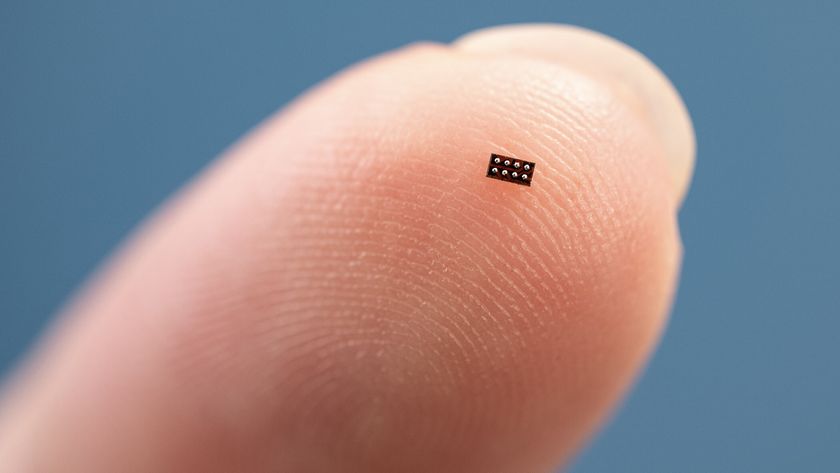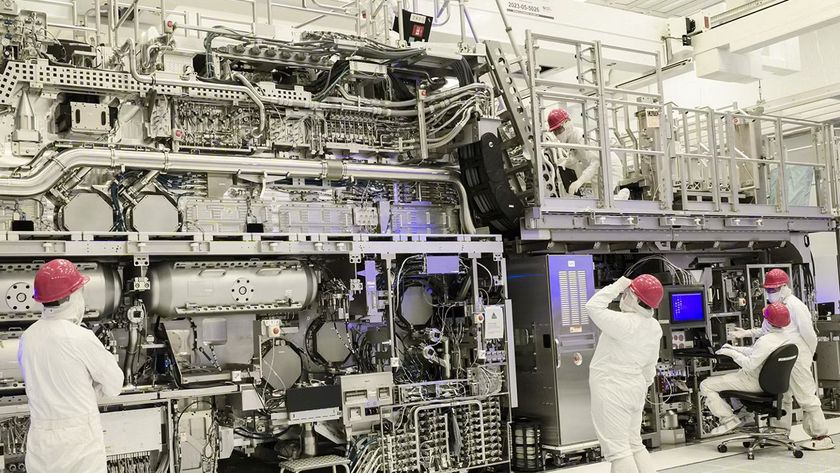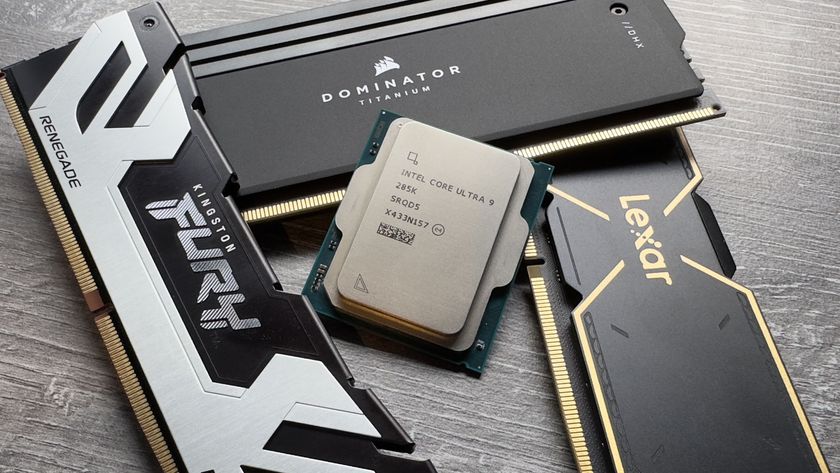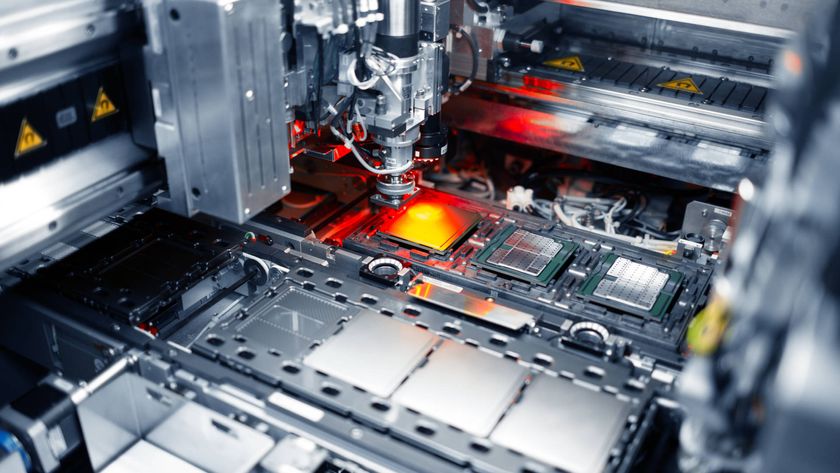A Brief History of CPUs: 31 Awesome Years of x86
| digg_url = 'http://maximumpc.com/article/features/cpu_retrospective_the_life_and_times_x86'; |
Believe it or not, your terrifically fast Core i7 fresh off Intel's assembly line contains DNA that dates back over three decades. The same is true if you roll with AMD's latest silicon, the Phenom II X4. We're of course referring to the longstanding x86 microprocessor architecture that has dominated the desktop and mobile scene since before some of you were even born, and will probably be a mainstay still yet for many more years to come.

Invented by Intel in 1978, the x86 architecture has evolved through the ages, not only getting faster, but increasingly flexible as more and more extensions and instruction sets accompany each new release. It's been a wild ride the past 30 years, and whether you lived through it all or have only recently picked up your first processor, we invite you to join as we look back at not only the most popular x86 CPUs in its history, but ones you may never even have heard of. Of course, if we've missed any of your favorite CPUs, chime in on the comments section and point out any omissions!
Intel 8086
In the beginning, Intel created the 8086 and its first 16-bit microprocessor.
And Intel said, Let there be x86: and there was x86.
And Intel saw the x86, that it was good.
No, we're not about to anoint Intel as a deity, but the gargantuan chip maker did give birth to the x86 processor. More than 30 years later, or roughly 3,000 calendar years in computer time, x86 continues to evolve (see how easy it is for creationism and evolution to co-exist?) from its modest start in 1978. That was the year Intel created the 8086, a 3-micron chip chugging along at 4.77MHz, while later versions would run at up to 10MHz. The 8086 had just 29,000 transistors, which was still nearly four times as many as the 8085 released in 1976, and was Intel's first 16-bit microprocessor and responsible for kicking off the 16-bit era (note that the 8086 wasn't the first 16-bit chip). Backwards compatibility with software written for the 8008, 8080, and 8085, and the ability to address 1MB of memory natively made the 8086 a near instant success.

(Image Credit: CPU-World.com)
Date Released : 1978
Clockspeed: 4.77MHz - 10MHz
Did you know?
Through some sneaky industrial espionage, the Soviet Union was able to reverse engineer and replicate the 8086 into their own pin-compatible K1810BM86.
The biggest gaming news, reviews and hardware deals
Keep up to date with the most important stories and the best deals, as picked by the PC Gamer team.
Intel 286
The 8086 and later the 8088 closed out the 70s and were the opening act in the early 80s. That is, until Intel entertained the computing world with the 80286 in 1982, a 1.5-micron part with a mind-boggling 134,000 transistors and 16MB of addressable memory. The first 286 pedaled along at 6MHz and, like the original 8086, would later double in speed. However, clock for clock, the 286 boasted twice (or more) the performance of the 8086, a generational leap in the x86 architecture that has never been duplicated to this day. Throughout the decade, the 286 became synonymous with IBM PCs, and within 6 years of its release, Intel estimates there were 15 million 286-based PCs installed worldwide.
Introduced with the 286 was a feature called protected mode, which controlled how memory was accessed. This feature allowed all 16MB of memory to be addressed, but there was no easy mechanism in place for the 286 to switch from protected mode back to the backwards compatible real mode, so it was never widely used.
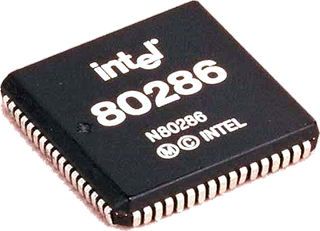
(Image Credit: Pipux.net)
Date Released : 1982
Clockspeed: 6MHz - 12.5MHz
Did you know?
Bill Gates famously dubbed the 286 as a "brain dead chip," since it wasn't able to run multiple MS-DOS applications under the Windows environment.
AMD Am286
Much has been made recently over the x86 licensing agreement between Intel and AMD, and we have to travel back to 1982 to see how it all began. That was the year AMD inked a deal allowing them to manufacture and sell both 8086 and 8088 processors. The very next year, AMD released the Am286, an exact clone of Intel's 286 processor, right down to the pin count, but with a higher frequency. And not just faster, but almost twice as fast at 20MHz. In some respects, the Am286 can be viewed as the first punch thrown in a fight that has been going on for almost 30 years.
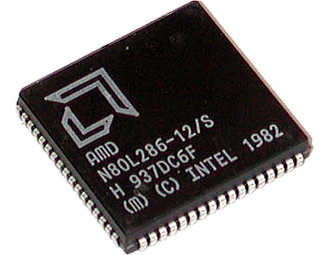
(Image Credit: CPU-World.com)
Date Released : 1983
Clockspeed: 8MHz - 20MHz
Did you know?
Like the Intel 286, the Am286 was built on a 1500nm fab process. Today's CPUs are made with a process that's 33 times smaller.
Intel 386
With PC gaming starting to take hold, Intel's 386 arrived not a moment too soon. Even adventure gaming could sometimes be a chore on a 286. Every try maneuvering Leisure Suit Larry in remade VGA form across the screen on a 286? We have, and it wasn't fun.
The 386, which was later named 386DX to avoid confusion with a lower cost 386SX variant that would debut three years after launch, initially ran at 16MHz and, once again, would eventually double in speed to 33MHz. It also doubled the number of transistors from its predecessor to 275,000 and was Intel's first 32-bit processor. The 386 could address up to 4GB (not MB) of memory, could switch between protected mode and real mode, and added a third 'virtual' mode, which allowed the execution of real mode applications that were unable to run in protected mode.
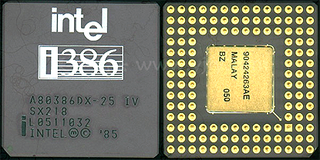
(Image Credit: yjfy.com)
Date Released : 1985
Clockspeed : 16MHz - 33MHz
Did you know?
The 386 was the first widespread microprocessor to be initially single-sourced. That is, PC makers could only buy the chip from Intel, a policy which contributed to the company's success in the CPU market.
Intel i486
Starting to see a pattern? Before the greatest decade ever (1980s) came to end, Intel released one more x86 processor, the 486DX. The first CPU to include a built-in math co-processor, the 486 raced along at 25MHz (and later 50MHz) and was also the first chip to breach the 1 million transistor mark with 1.2 million transistors. Like the 386, it could address up to 4GB of memory, and with the addition of on-board cache, optimized instruction set and enhanced bus interface unit, the speedy 486 found a home in both desktop and server environments.
For gamers, the 486 picked up where the 386 left off, and most old-school gamers probably have fond memories of blowing up Tie Fighters while using a 486DX2-66. Fast as it was (at the time), the 486 couldn't keep up with the pixel pushing power required by the advent of 3D graphics.

(Image Credit: Wikimedia.org)
Date Released : 1989
Clockspeed : 25MHz - 100MHz
Did you know?
Initially launched as the i486DX, the 486 design included numerous variations, including the i486SX, i486SL, and the widely popular i486DX2.
>>Next, AMD brings the heat...
